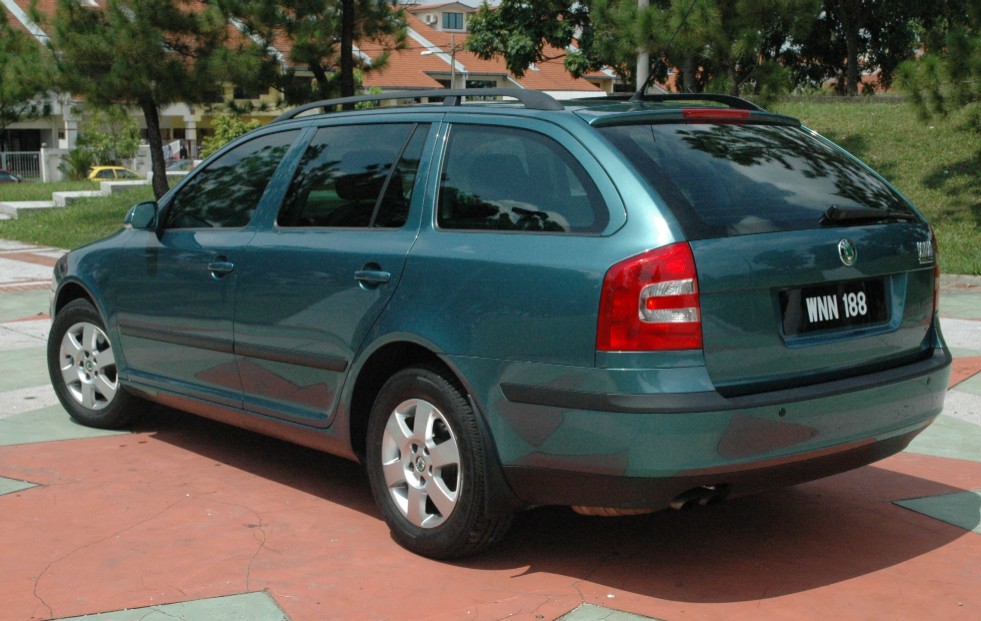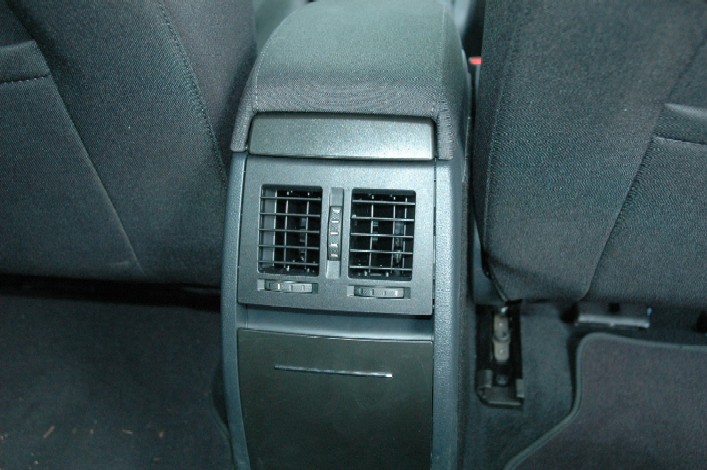Skoda Octavia Kombi – One Up on the Competition
The Skoda Octavia is available as a Kombi (read as station wagon), and offers yet another great deal to those who want a European car minus the hefty price tag, and would appeal to you especially if you have a family, small kids, or pets. Built exactly like the Octavia sedan, with exactly the same features, except for the addition of a station wagon compartment at the rear end, the Skoda Octavia Kombi offers additional versatility for those who need the extra space.
Like the Octavia sedan, the Kombi is equipped with the same great 2.0 litre FSI engine that is found in both the Audi A4 and the Volkswagen Golf. With 150 horses raring to go under the hood, the Kombi offers all the handling characteristics of a car while providing additional utility. Station wagons are logical and practical choices of the European and American motoring public, but they kind of petered out here as a result of the introduction of cheaper vans in the seventies and eighties. Later, as the market became more affluent, higher-grade vans, called ‘MPV’s to differentiate themselves from run-of-the-mill workhorses, were introduced. The import duties ‘favoured’ vans (defined then as vehicles with sliding doors and engine under the front seats), and station wagon sales dropped as a result of higher duties. Somehow, local assemblers hardly looked at the station wagon market seriously, except for Volvo who had reasonable success with the T5, and now has the V50.
Now, it looks like they are coming back, because the one thing that a station wagon can offer over a van is car-like handling by virtue of the fact that it is essentially a car, plus a fuel economy that is also close to that of a car. A van made out as an ‘MPV’ usually has a bigger weight burden, and being usually much larger, offers more wind resistance. A van, no matter how you beef it up, can never handle like a car, and of course, fuel consumption is higher due to the additional weight and bulk. As a result, smaller families seem to be finding that the station wagon may be a better choice, especially in the light of the current fuel prices.
Skoda is fully owned by the Volkswagen Group, the same group that also makes and sells Audi. The difference is, Skoda is manufactured in the Czech Republic, where labour costs are lower than in Germany. What you get is cars that are cheaper, but with the might and resources, including research and development of the parent company.
The front end of the Skoda Octavia Kombi looks exactly like the standard Octavia sedan. At the rear end, however, the roof is tastefully extended where the boot usually sits, giving the Kombi the additional space. The result is a very trendy-looking family vehicle. The same 6-speed automatic transmission with Tiptronic manual shift option is used, with essentially the same gear ratios, giving the Kombi much the same fuel economy and driving characteristics as the sedan version. Having a 6-speed puts the Kombi one up on the competition; most cars now only have four or five speed boxes. A six-speed box offers greater versatility in gear ratios to give a good balance between acceleration and fuel economy.
Inside, the trim reeks of Audi and Volkswagen DNA. Although it is not as well appointed as the Audi, the trim level is respectable. It remains very much a driver’s car, with the regular tachometer redlined at 6500 rpm, and a speedometer that reads all the way to 240 km/hr. Other useful driver aids are a fuel gauge and a temperature gauge. The steering wheel is adjustable for both tilt and reach. The seats are wide and comfortable, and the driver’s seat is electrically controlled with three memory positions. Seat material is fabric, but leather is available as an option. Non-essential driving information is displayed on a digital display in the instrument cluster; you can get spot consumption, distance to empty tank, average consumption, distance traveled, time traveled, etc, etc. An interesting feature I discovered is that the wipers speed up or slow down depending on the degree of downpour. A light sensor is also incorporated to switch your lights on automatically. A most welcome feature is the additional blower located between the two front seats to channel cool air to the rear passengers. In typical station wagon arrangement, the rear seats split and fold to accommodate larger and longer items.
The Octavia Kombi drives well, and feels just like a normal sedan. Zero to one hundred kilometres per hour was achieved in 8.9 seconds, pretty fast for a normally aspirated car of this size. Top speed, surprisingly, was just a little over 220 km/hr (with a little help from a long down-slope). In terms of fuel economy, a full tank got us 420 kilometres on a trip to Ipoh and back, working out to be a little over 22 sen a kilometre, which speaks well of the Kombi’s non-thirsty nature.
The Octavia Kombi is noticeably stable, especially in a straight line. The high caster angle of the front suspension contributes greatly in this department, and cruising at between 160 to 180 km/hr is something you find very natural. Around corners, the Kombi is just as well behaved as its sedan sibling, and although technically it is supposed to be a little more top heavy, the difference was not noticeable. The suspension is independent all round, but whereas the Audis use aluminium lower arms, those in the Octavia are steel fabrications, possibly due to cost considerations.
Price as quoted post NAP is still at RM157k; we don’t know how long it will hold at this level, so if it does interest you, do go for a test drive and check it out for yourself.















































